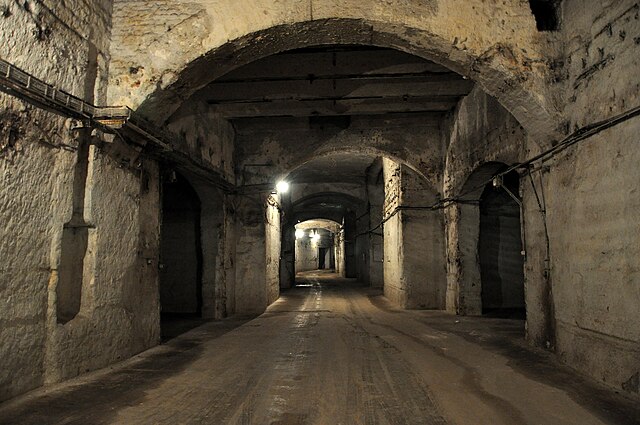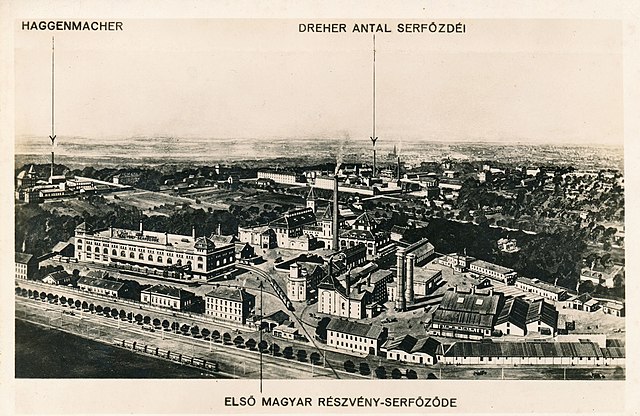Kőbánya is the 10th district of Budapest and one of the largest by territory. It is located in southeast Pest, easily accessible from the downtown by Metro 3, whose terminus is named Kőbánya-Kispest.
Szent László-templom, Kőbánya
The famous Szent László Gimnázium
Image: Kobanya kapona tercivertanlegi
Image: Kobanya ohegy u kapolnacivertanlegi
The Kőbánya cellar system or cellar system of Kőbánya, sometimes known to non-Hungarians simply as the Kőbánya Mine, or the Kobanya Mine, is an extensive network of subterranea, or underground spaces, in the 10th district of Budapest (Kőbánya), in Hungary. It is considered to be the largest cellar complex in the country. The complex as a whole started as an underground limestone quarry in a wine-growing area of present-day Kőbánya in the Middle Ages. Later wineries and beer breweries were established on the premises and they continued to use some of the underground spaces. During the Second World War, the dimensions of the complex enabled it to be used as a covert aircraft engine assembly plant and a civilian hideout. Since 2008, Kőbánya Asset Manager Jsc. organizes free guided tours annually, which introduce visitors to both the complex and the Havas Villa, one of the most notable properties connected to it. The underground complex is one of the locations that are participating in the European Heritage Days.

One of the wide corridors in the tunnel complex
Anton Dreher Sr. (id. Dréher Antal), one of the first prominent users of the tunnel complex
Postcard from 1928, showing the Dreher Brewery Combine which used groundwater from under the tunnels
An area of the complex showing vertical ground separation (the pipe was for the transportation of barley used in the malting process)








